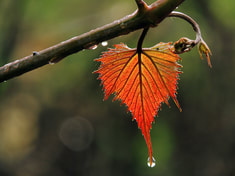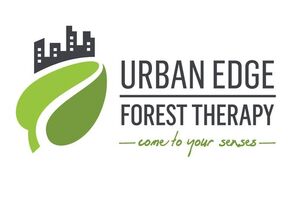 Shantanu Kuveskar, CC BY-SA 4.0 Shantanu Kuveskar, CC BY-SA 4.0 Each season offers its gifts to our senses, and with autumn our senses awaken to the powerful changes in nature around us. We observe the leaves changing color and falling to the ground, we hear crisp leaves underfoot, we feel a stronger breeze and cooler temperature, and deep within our bodies, with the waning daylight, perhaps comes a gnawing desire to retreat to our homes a little earlier and stay snug and warm, much like fellow creatures that hibernate. Our sense us smell awakens too to the change in seasons. What causes that rich “autumn smell”? In a recent article journalist Matthew Cappucci provides insights: Leaves are designed to produce “food” for the plant — glucose — through the process of photosynthesis. They take in six carbon dioxide and six water molecules at a time and, with a bit of sunlight, reshuffle them to form glucose and six oxygen molecules. That’s why plants are said to “purify” the air. They add breathable oxygen to it. But even though this reaction produces energy for the plant, it takes a lot of work to sustain. In the fall, when the energy needed to create the “food” outweighs the energy afforded to the plant by the food itself, the leaves are no longer needed — and with that, the tree bids them farewell. When the leaves fall, they die. As they take their last breath, they “exhale” all sorts of gases through tiny holes known as stomata. Among these compounds released are terpene and isoprenoids, common ingredients in the oils that coat plants. Terpenes are hydrocarbons, meaning their main ingredients are hydrogen and carbon. Pinene, a species of terpene, smells like — you guessed it — pine. It’s a main ingredient to the saplike resin that repairs the bark of conifers and pine trees. Occasionally, these gas molecules excreted by plants — known as volatile organic compounds — interact with variants of nitrous oxide. This can lead to ozone production, which can smell a bit like chlorine or the exhaust of a dryer vent. In addition to the release of gases contained within dying vegetation, two other effects contribute to the emotion-evoking scent that accompanies a northwest autumn breeze: decomposing plant matter, and pollutants trapped at the ground levels during the fall months. The soil in most parts of the world is rich in Geotrichum candidum, a fungus that causes rotting and decomposition of fruits and vegetables and dense plant matter. In fact, Geotrichum candidum has been sampled on all seven continents. This is just one of many species that erodes away as deceased organisms, the chemical reactions of which contribute to the smell of “fall.” Allow your senses to connect with autumn.
0 Comments
Leave a Reply. |
About this Blog
Hi! I'm Nancy Kopans, founder of Urban Edge Forest Therapy. Join me on an adventure to discover creative ways to connect with nature in your daily life, ways that are inspired by urban surroundings that can reveal unexpected beauty, with the potential to ignite a sense of wonder. Archives
April 2023
Categories
All
|

 RSS Feed
RSS Feed